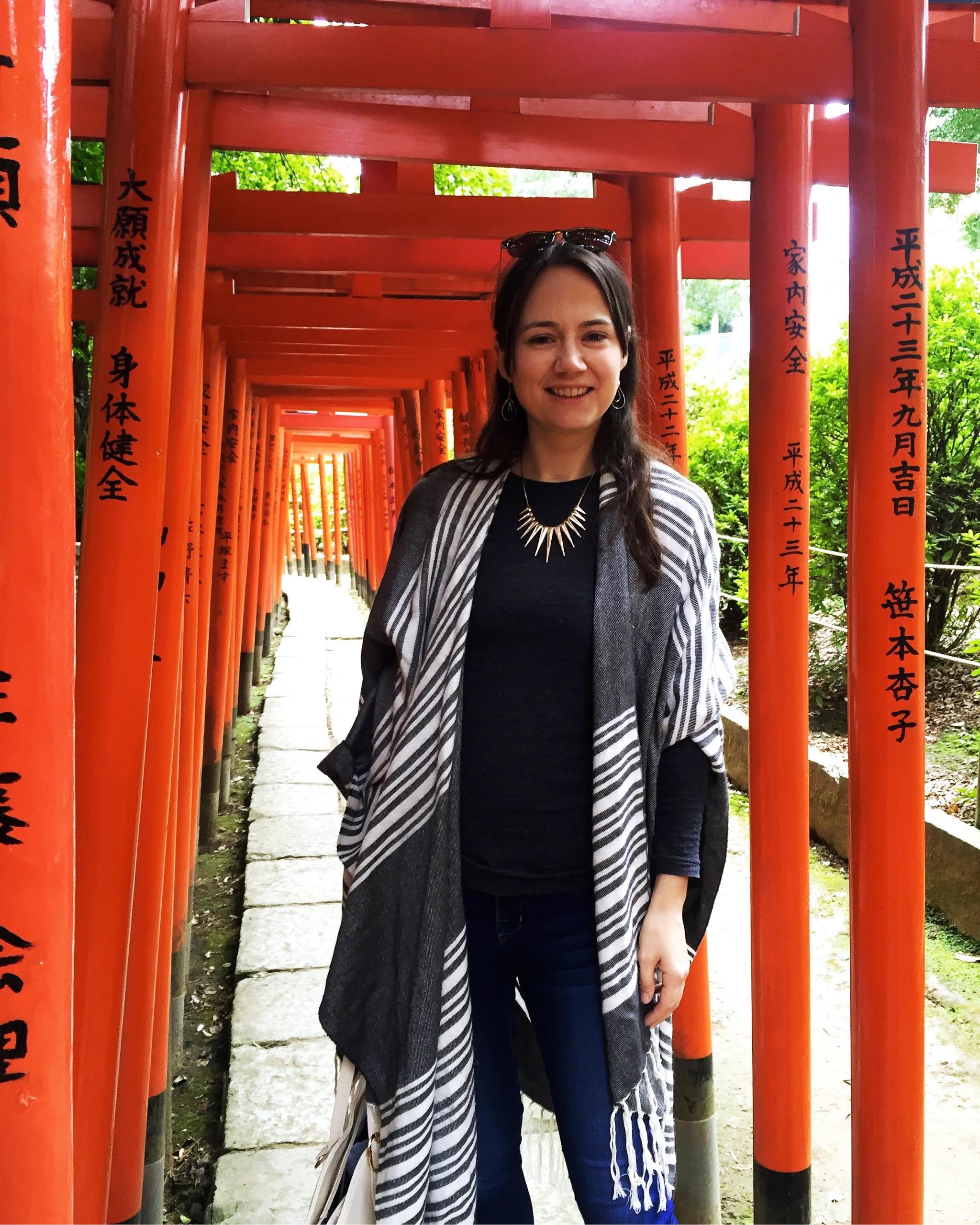Tokyo Becky is back! So now that we’ve covered our first list of five places to see in Tokyo, let’s move on to five more amazing places to see in the most populated city on the planet.
6. Ueno
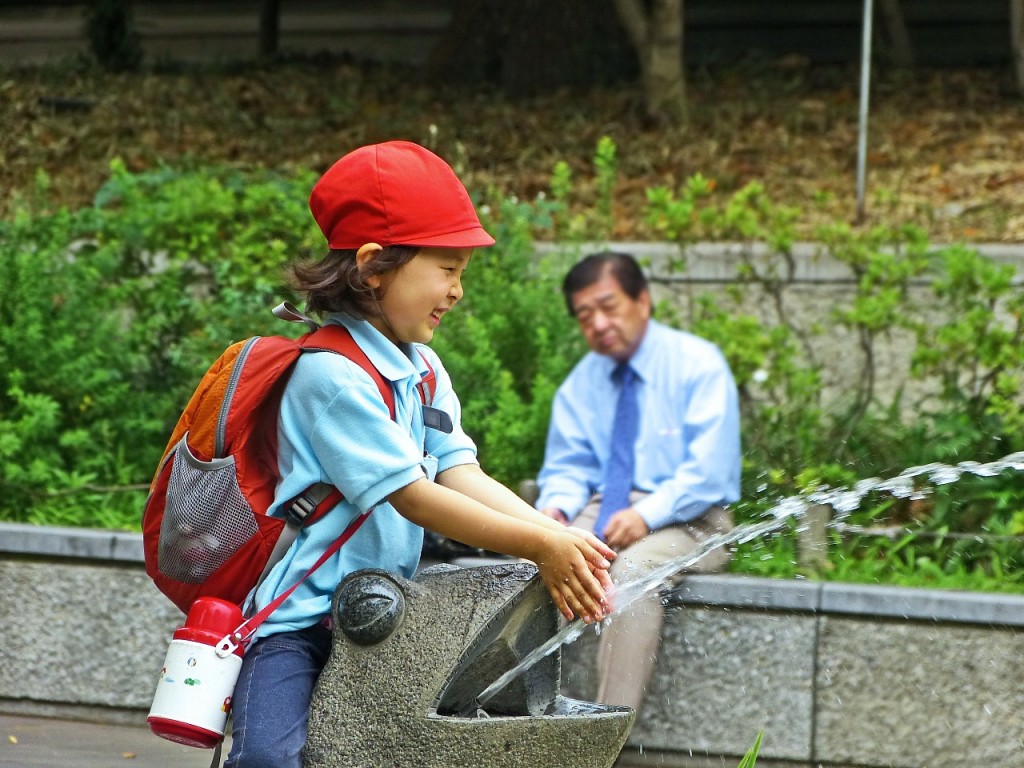
Little Girl in Ueno Park
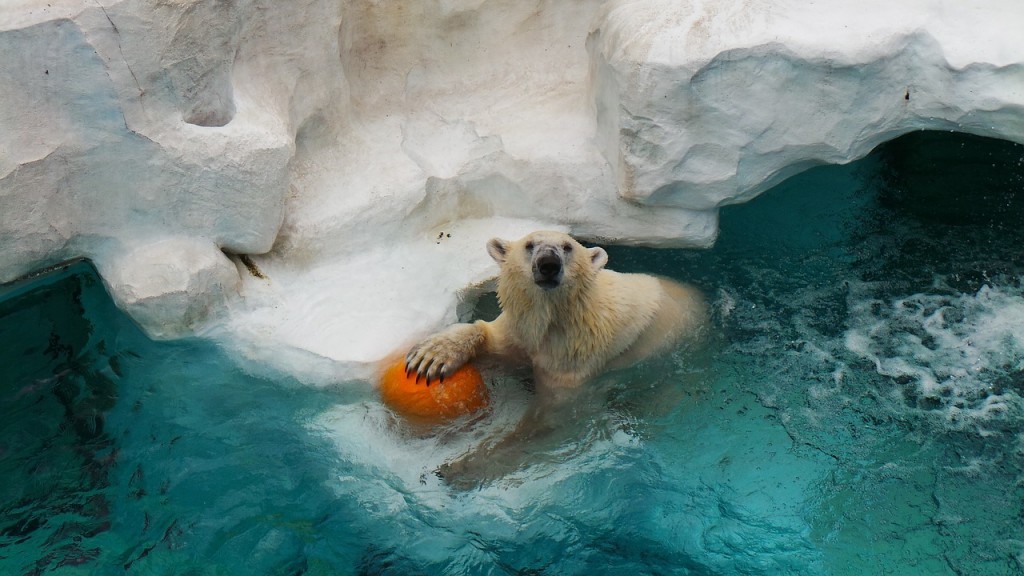
Polar Bear at Ueno Zoo
The east side of Tokyo is the quieter, more traditional side of the city, and doesn’t always get the love that it should from first-time visitors. Ueno, however, is one of the big east-side destinations with a huge variety of things to do including visiting one of Tokyo’s most popular parks, Ueno Park, especially for cherry blossom season. Ueno Park has the biggest concentration of things to do in one park in Tokyo and gets over 10 million visitors a year. When visiting the park, you can visit the Tokyo National Museum, Tokyo’s oldest and largest museum, housing over 110,000 items. There is also the Natural Museum of Nature and Science, which is a decent collection of animal and plant specimens and two floors of dinosaurs (great for the kids on a rainy day). Another can’t miss part of the Ueno Park is Shinobazu Pond, a large natural pond covered in lotuses that has been featured in several famous Japanese paintings. Boats are for rent on the eastern side of the pond (go on, get a cute swan boat). Although it may not look great on the outside, the Tokyo Metropolitan Art Museum is an important part of the Tokyo’s contemporary art scene and is also located in Ueno Park, along with Ueno Zoo, Japan’s oldest zoo. (I should add a note of warning here about Ueno Zoo. I have personally never been to Ueno Zoo, and a few of my friends have complained about the small cages and limited environments for the animals. If this upsets you, please consider skipping Ueno Zoo). My final two recommendations for Ueno Park are the National Museum of Western Art (displaying Japan’s biggest collection of Western art with regular exhibitions) and the University of Tokyo campus, which is next to Shinobazu Pond. The University of Tokyo is Japan’s top university and has a beautiful campus.
The other part of Ueno that I’d highly recommend is Ameyokocho, a lively shopping street that runs parallel to the Yamanote Line Train. This area is lined with vendors shouting their deals into the streets and is one of the cheapest areas to buy nuts, spices, bags, and sneakers in Japan. This area has been referred to as one of Tokyo’s last “black market” areas, making it an exciting place for a potential deal but also a place where you need to watch your wallet. It is said that the term “Ameyoko” may refer to “candy store alley,” as candy used to be sold in bulk here. The “Ame” may also refer to the fact that American goods used to be sold on the black market here after WWII. It’s a place with a fascinating history and well worth a visit if you’re in the Ueno Area.
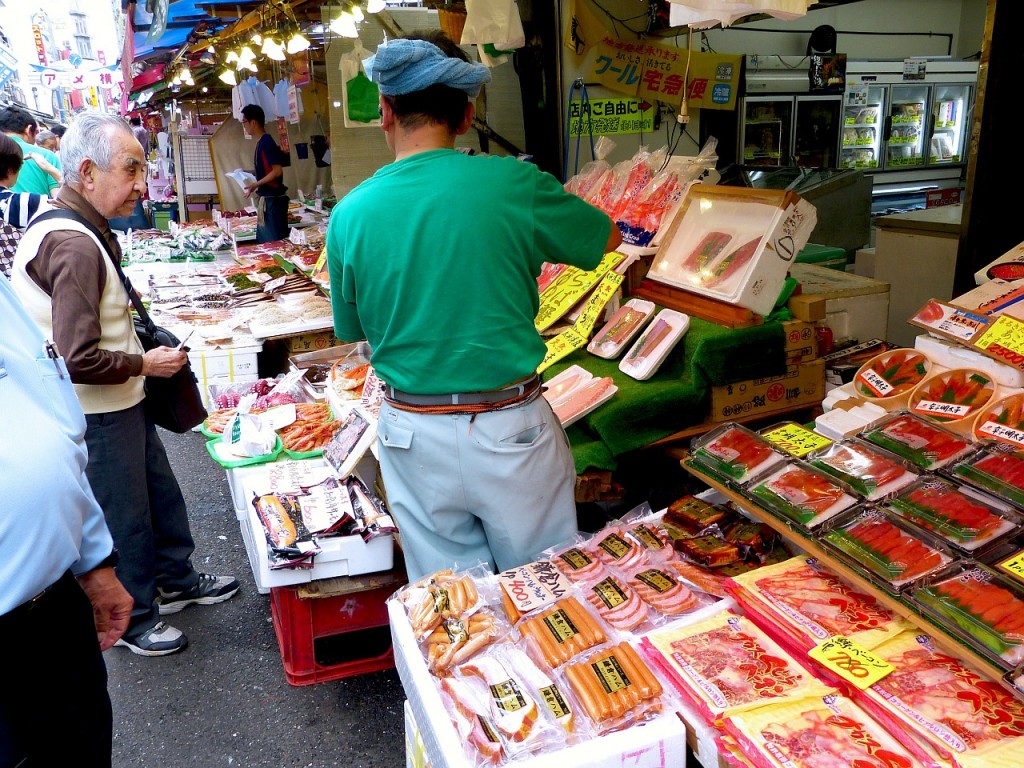
On the lively streets of Ameyokocho, Ueno, Tokyo
7. Roppongi
I’m going to honest with you. Roppongi has a bad reputation. It’s known as “that place where all the foreigners hang out,” or “that place where all those guys stand outside of clubs trying to drag you in,” one of the few “dirty and scary” places in Tokyo. It actually is all of those things. It is the most ethnically diverse neighborhood to walk around in, especially on weekend nights, in Tokyo, and there is one street where many guys will try to talk you into the clubs that they are working for (only take this offer if that’s what you came for, and be prepared to pay up!). But – Roppongi also has some amazing architecture, art museums, and some of the best restaurants in the city that are a great way to spend your day or evening.
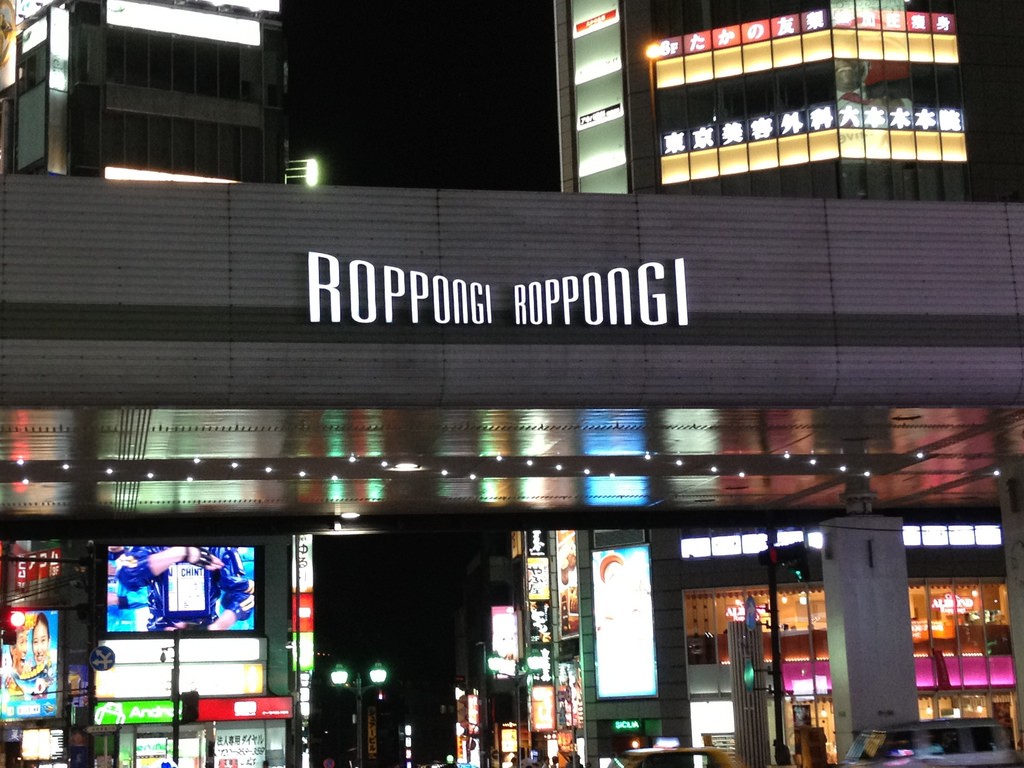
The Famous Roppongi Crossing
To get the best out of Roppongi, I recommend first visiting Roppongi Hills, a huge complex that has one of the most popular art museums in Tokyo, the Mori Art Museum, which also offers a great view of Tokyo from its observation tower. Toho Cinemas in this same complex is one of the best movie theaters in the city, and serves as the home base for the Tokyo International Film Festival each October. Don’t miss the giant spider in this complex, which is a popular meeting point, and the beautiful park on the ground level. There are great restaurants in this complex and nice bars on the top floor of the Roppongi Hills Tower.
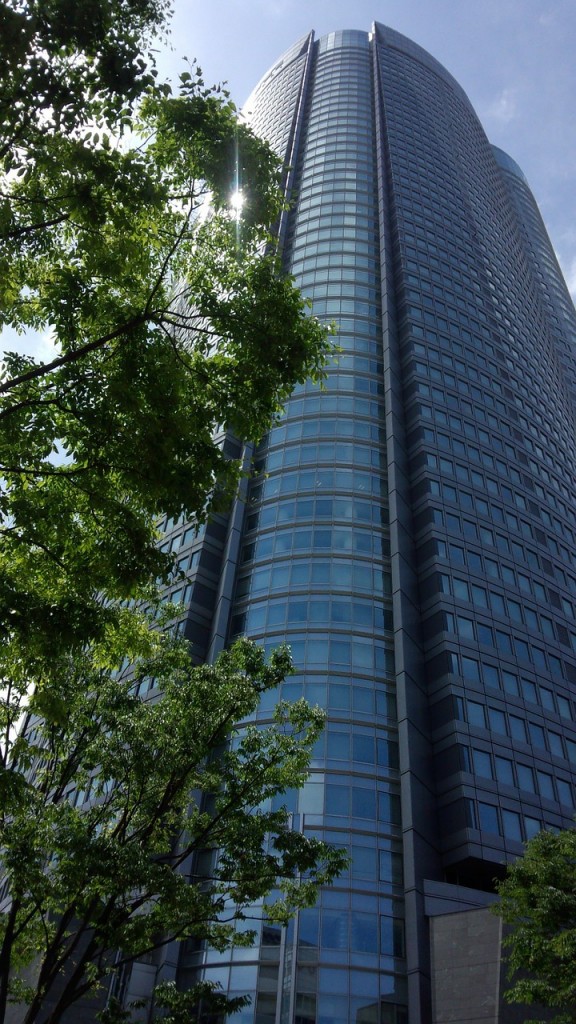
Part of the Roppongi Hills Complex
A 10-minute walk from Roppongi Hills is one of the newest shopping centers in Tokyo known as Tokyo Midtown. The 20/20 Art Museum here, designed by renowned architect Tadao Ando, offers rotating exhibits of famous contemporary artists. The National Art Museum, another ten minutes down the road is one of Tokyo’s premier art museums and its architecture is interesting all on its own.
8. Odaiba
Odaiba means “fort” in Japanese and actually started as a series of small, man-made islands that were built in the 1800s as a way to protect Tokyo Bay from any potential invaders. Eventually, these small islands were combined into bigger islands using landfill and during the booming Japanese economy of the 1980s, a huge development plan was made to develop the Odaiba area into a futuristic shopping and residential neighborhood. The bursting of the economic bubble put the plans on hold for this massive landfill area in the early 1990s, but by the year 2000, the elevated Yurikamome monorail line and several other shopping venues and museums with unique futuristic architecture had opened, and Odaiba is now a popular spot for dates and visitors looking for a full day of entertainment.
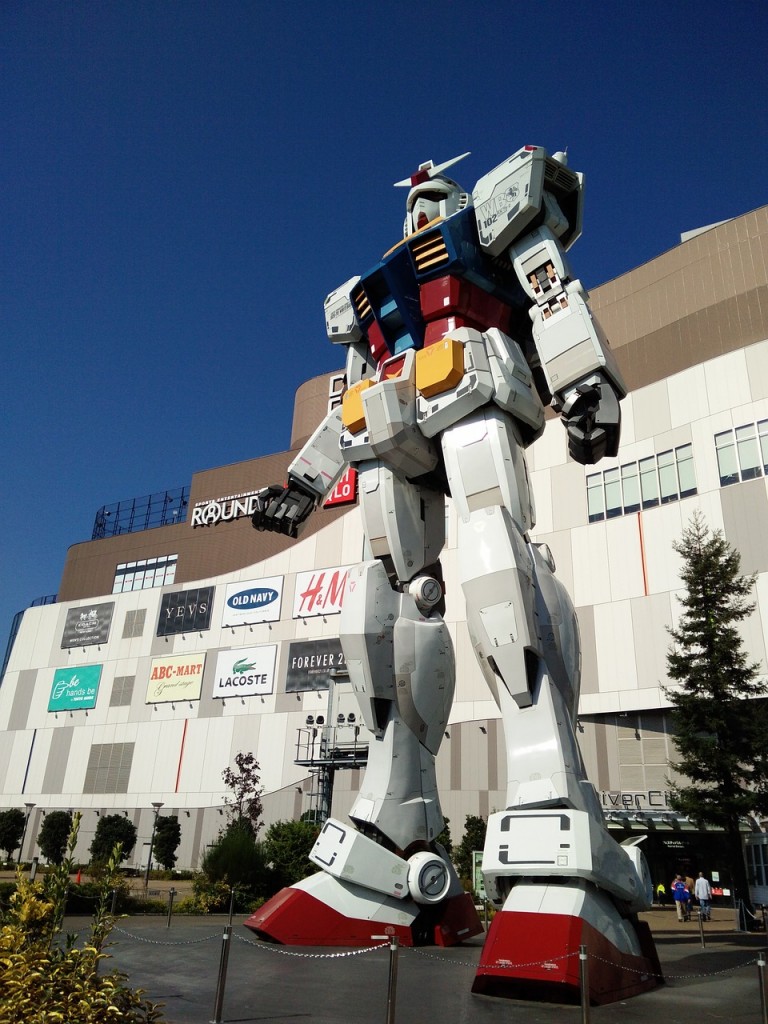
Hello Gundam!
Odaiba is certainly a unique part of the city with excellent views of Tokyo Bay and the Rainbow Bridge. It is also possible to take a boat from Asakusa, mentioned in my previous post, and get off here.
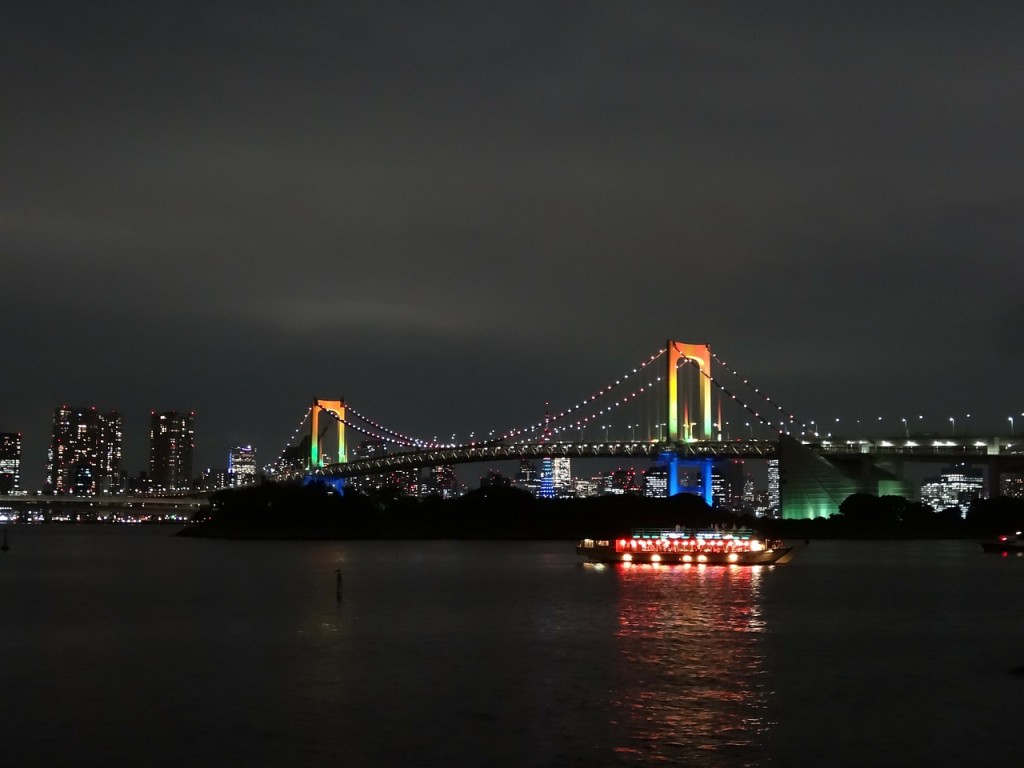
Rainbow Bridge
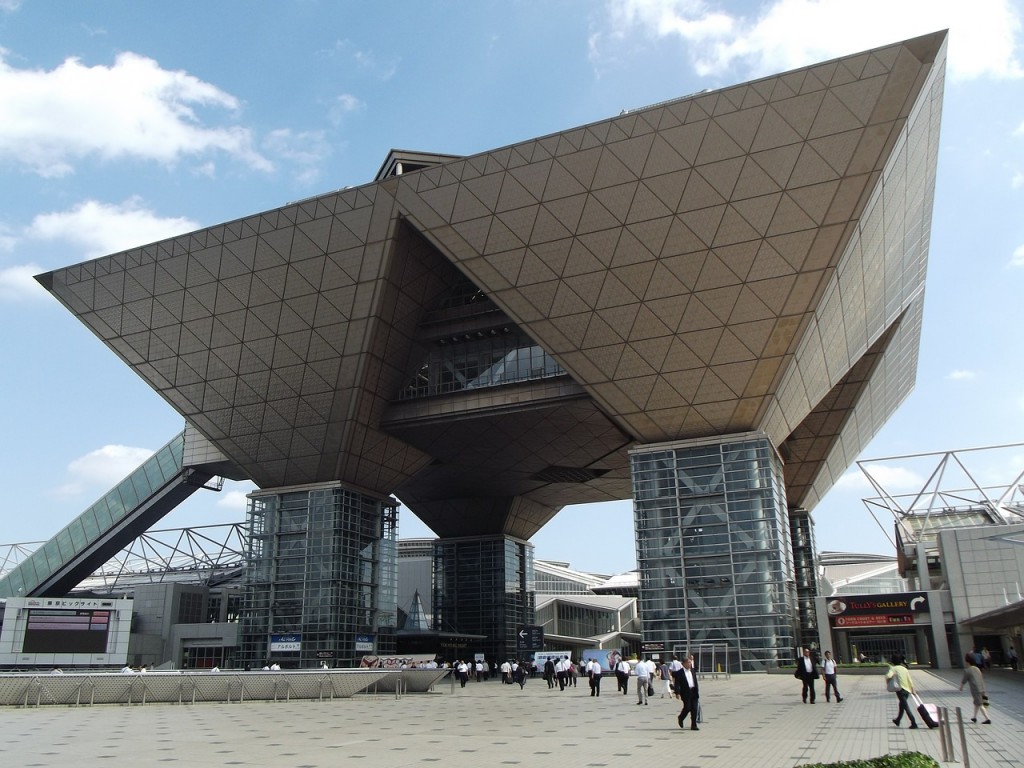
Tokyo Big Sight, Odaiba
I recommend visiting the Fuji TV building (the one with the big metallic ball at the top with big square holes cut out of the building), home to one of Japan’s private TV stations. There is an observatory in the metallic sphere and some exhibits from Fuji TV’s popular programs. Japanese TV certainly has its own unique culture, and you are sure to see something interesting in this building while also getting more familiar with Japanese forms of entertainment. Please note that the Fuji TV building is closed on Mondays.
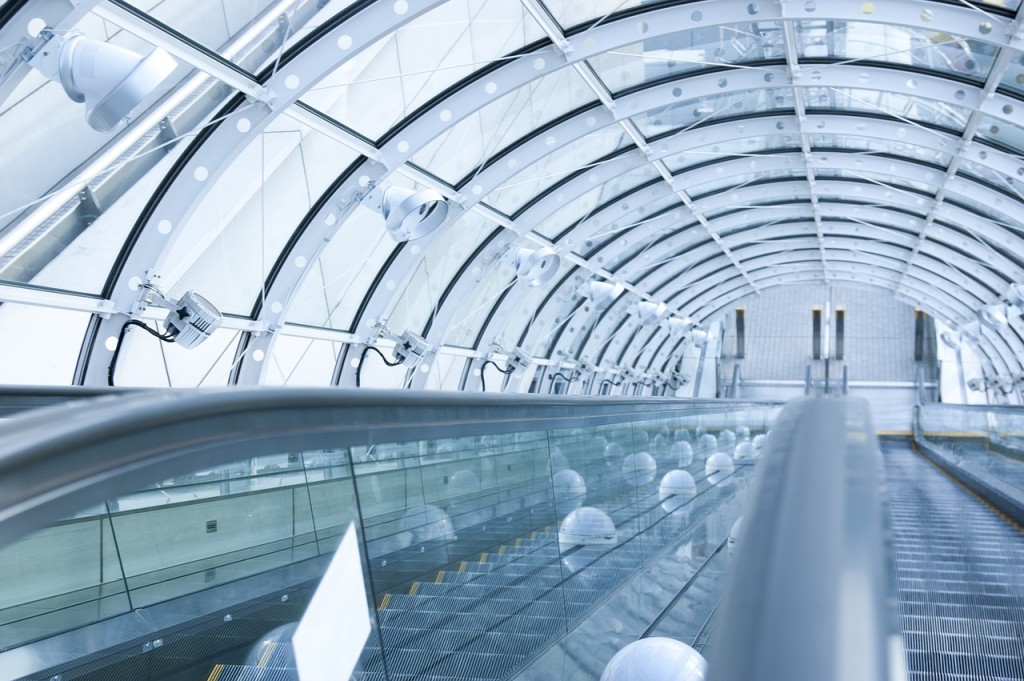
The Fuji Television Building, Kenzo Tange, Escalator
The DiverCity Tokyo Plaza opened in 2012 and is famous for the massive Gundam statue at the front. The shopping center also has a store dedicated to the robots from the anime series to get your Gundam fix. Nothing says Tokyo like life-size anime figures!
I also love the Oedo Onsen Monogatari, which is large bathhouse that recreates the Edo era (1603-1868) and draws actual hot spring water from a depth of 1,400 meters, one of the very few bath houses in Tokyo that actually has natural hot spring water. I love coming here and choosing my own yukata (Japanese-style robe) and walking around the center of the bath house to the different restaurants or retro games area before soaking in several different baths, including one outside, and hanging out in the saunas.
9. Yanaka/Nippori/Nezu
Another area of Tokyo that I’ve always felt that is underrated is the Yanaka/Nippori/Nezu area of Tokyo. Nippori is actually a convenient place to stay in Tokyo as it’s very close to the Keisei Skyliner, a direct train in from Narita Airport. Nippori/Nezu are in what you may call the “shitamachi” or older “downtown” part of Tokyo in the northeastern part of central Tokyo.
In the Yanaka/Nippori/Nezu area, you can find a number of interesting places including the beautiful Nezu Shrine (if you’re looking for a nice “Red Torii Gate” photo opportunity while in Tokyo, this is a great place for it – see below).
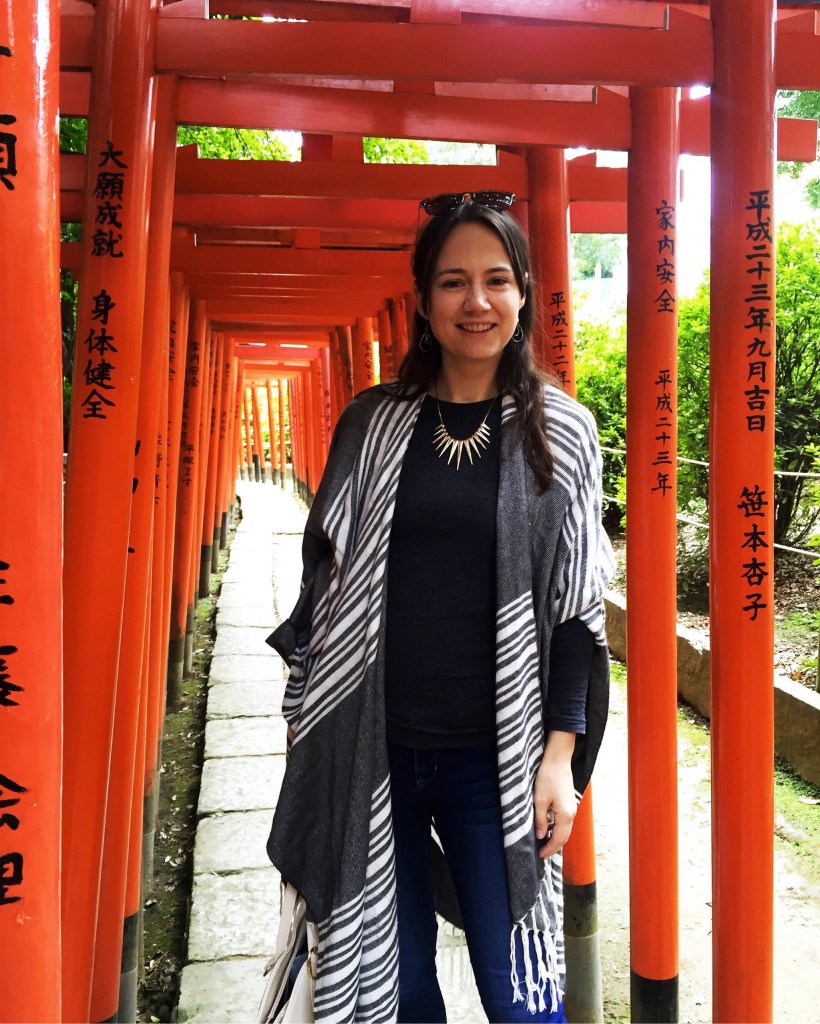
Loving Nezu Shrine!
There is also an interesting museum known as Scai the Bathhouse, a small gallery whose building first served as a bathouse when it was built in 1787. Another nice museum in the area is the Asakura Museum of Sculpture, a three-storied former residence of famous Japanese sculptor Fumio Asakura (1883-1964). The museum includes his extensive library and gardens at both the ground floor and rooftop levels.
Finally, though it may sound creepy, the Yanaka Cemetery is one of the highlights of the area and a wonderful place to walk around. It is so large that it is very easy to find peace and solitude while pondering all the history of the area.
The Yanaka/Nippori/Nezu area is a quietly beautiful and serene part of Tokyo with quiet cafes and shops full of artisans. Come here and feel a distinctly different part of the city.
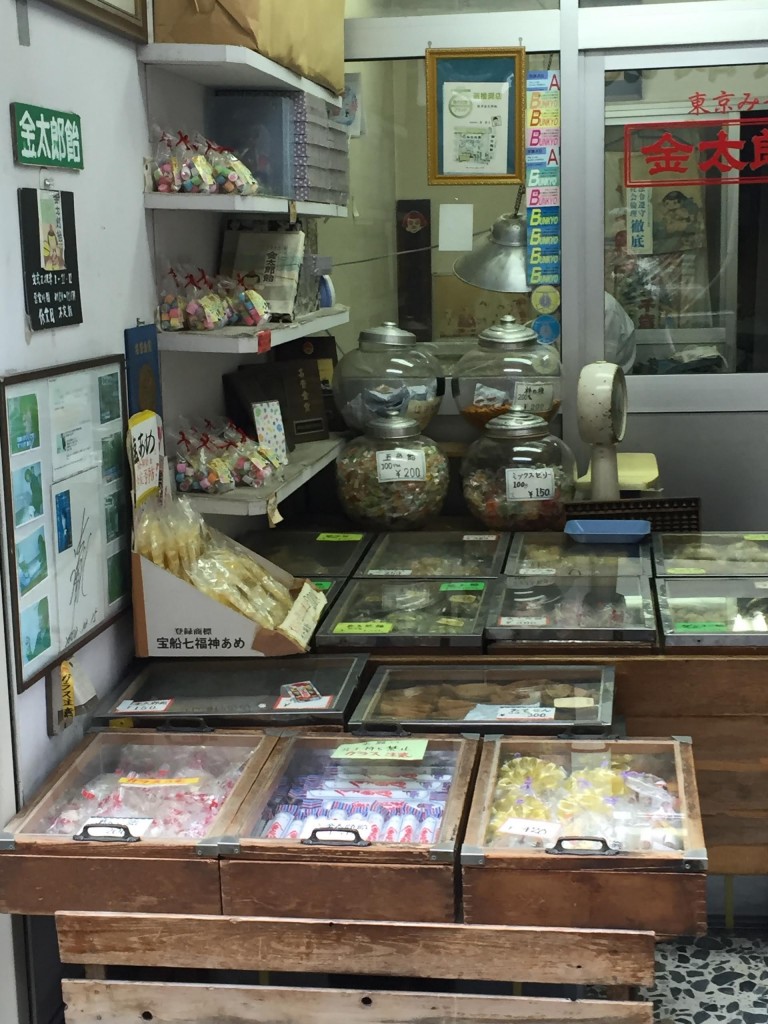
One of many old shops down the back streets of the Yamanaka/Nippori area
10. Shimokitazawa
Last but certainly not least is a place that has been my favorite place in Tokyo for a long time because I just love its mix of artists, musicians, cafes, and live music venues all packed together in a small neighborhood with streets so narrow that it feels like its own little village, although it is only a five-minute train ride from Shibuya. I have actually lived in this neighborhood for eight years and know so much about it that I will be writing a separate post about Shimokitazawa to explain more about this eclectic little village, but if you’re looking for wonderful little cafes, funky restaurants, or secondhand shops selling anything from vintage clothing to retro varsity sports jackets, you will find yourself in your own little heaven. Can’t miss places in Shimokitazawa include the Village Vanguard Bookstore, Bear Pond Espresso (my favorite coffee shop in Tokyo), Mother Bar, and the Magic Spice restaurant. Have a wonderful time exploring my neighborhood.
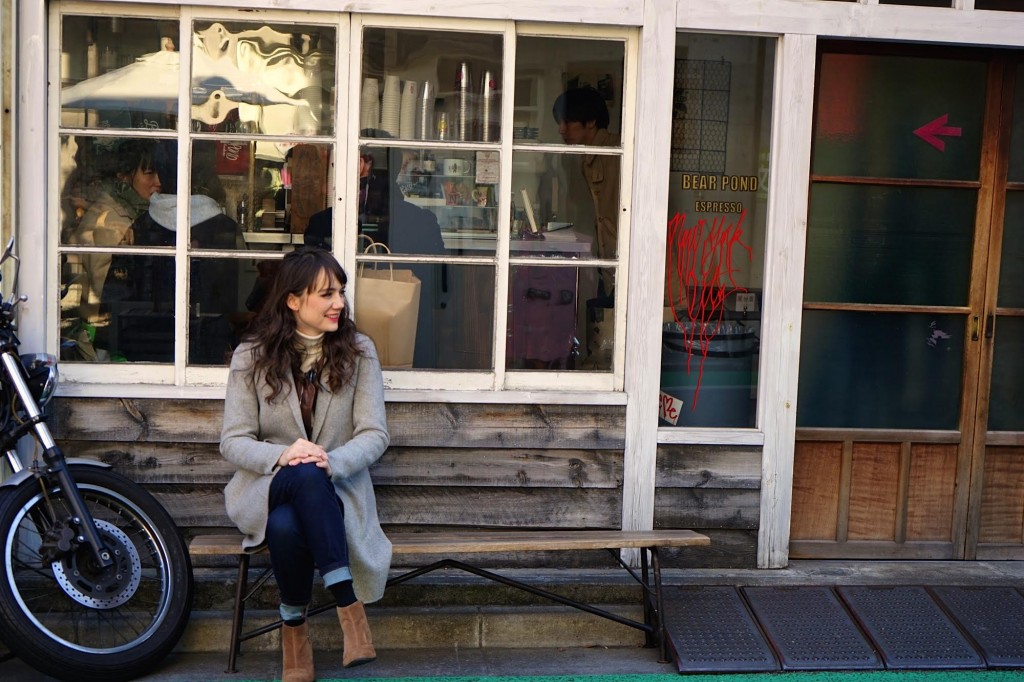
In my favorite place – in front of Bear Pond Espresso, Shimokitazawa
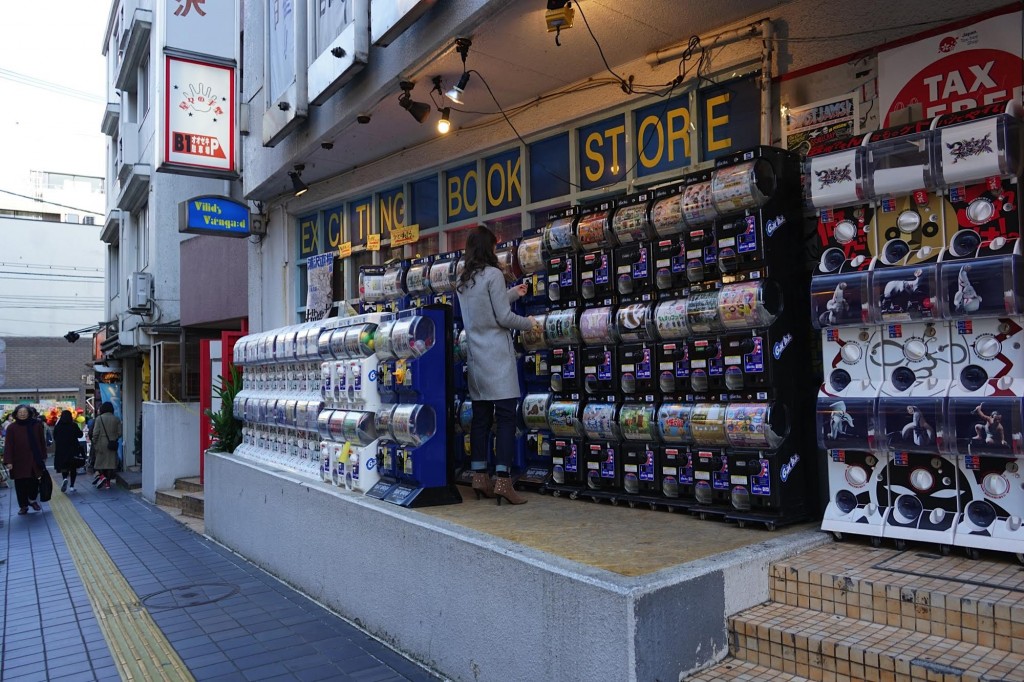
The main entrance to the Village Vanguard Bookstore in Shimokitazawa
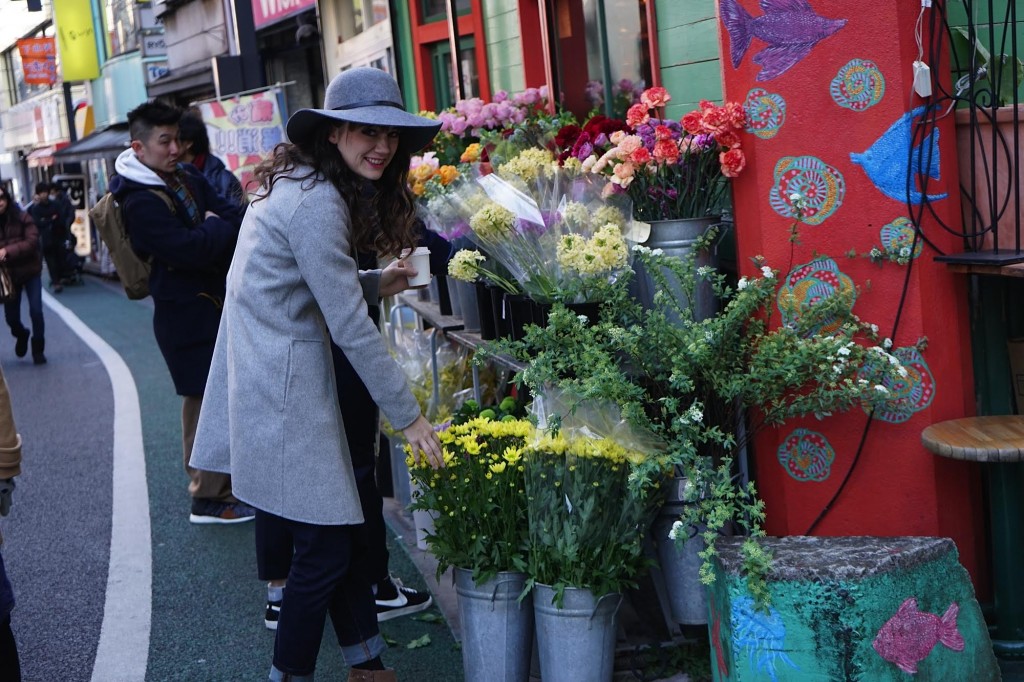
On Ichibangai Street in Shimokitazawa in front of Flower Bar, a flower shop by day and a bar by night

